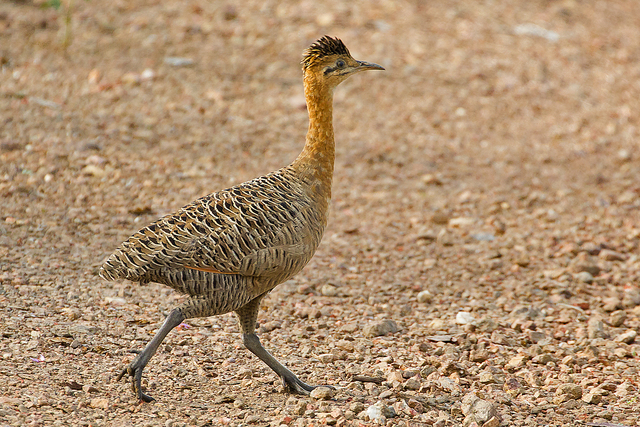The Fascinating Rhynchotus Rufescens: A Deep Dive Into The Red-winged Tinamou
Share
The Red-winged Tinamou, scientifically known as Rhynchotus rufescens, is a captivating bird that belongs to the order Tinamiformes and the family Tinamidae. This article explores the taxonomy, habitat, behavior, and conservation status of this unique species, providing bird enthusiasts and nature lovers with a comprehensive understanding of its significance in the ecosystem.

Taxonomy and Classification
The Red-winged Tinamou was first described by Temminck in 1815, under the name Tinamus rufescens. The species is part of the Tinamidae family, which includes several other tinamou species. The type locality for this bird is suggested to be São Paulo, Brazil, based on historical records from Azara in 1805. The species is characterized by its distinct physical features and behaviors that set it apart from other birds in its family.
Physical Characteristics
The Red-winged Tinamou is a medium-sized bird, typically measuring between 30 to 35 cm in length. It has a robust body with a rounded head and a short tail. The plumage is predominantly brown with a reddish hue on the wings, which is particularly noticeable during flight. The legs are strong and adapted for running, allowing the bird to navigate its habitat effectively.

Habitat
This species is primarily found in a range that includes northern Bolivia, central and eastern Brazil, eastern Paraguay, Uruguay, and parts of Argentina. The Red-winged Tinamou prefers habitats such as grasslands, savannas, and open woodlands, where it can find ample cover and food sources. These environments provide the necessary conditions for nesting and foraging.

Diet
The diet of the Red-winged Tinamou consists mainly of seeds, fruits, and insects. This omnivorous bird forages on the ground, using its strong legs to scratch the soil and uncover hidden food sources. Its feeding habits play a crucial role in seed dispersal, contributing to the health of its ecosystem.
Behavior
The Red-winged Tinamou is known for its elusive nature, often remaining hidden in dense vegetation. It is primarily a ground-dwelling bird, relying on its camouflage to avoid predators. When threatened, it may freeze in place or run swiftly to escape danger. The bird is also known for its distinctive vocalizations, which include a series of low, resonant calls that can be heard during the breeding season.

Reproduction
Breeding typically occurs during the rainy season, with males performing elaborate courtship displays to attract females. The female lays a clutch of eggs in a shallow nest on the ground, and both parents may take turns incubating the eggs. After hatching, the chicks are precocial, meaning they are relatively mature and mobile, allowing them to forage for food shortly after birth.

Conservation Status
The Red-winged Tinamou is currently classified as a species of least concern by the IUCN Red List. However, habitat loss due to agricultural expansion and deforestation poses a threat to its population. Conservation efforts are essential to ensure the survival of this species and its habitat.
Birdwatching Tips
For birdwatchers interested in observing the Red-winged Tinamou, the best approach is to visit its natural habitats during the early morning or late afternoon when the birds are most active. Look for them in open grasslands and near water sources. Patience is key, as these birds can be quite elusive.
The Red-winged Tinamou is not just a beautiful bird; it plays a vital role in its ecosystem. By understanding and appreciating this species, we can contribute to its conservation and ensure that future generations can enjoy its presence in the wild. The intricate balance of nature relies on the survival of such unique species, making it imperative to protect their habitats and promote biodiversity.